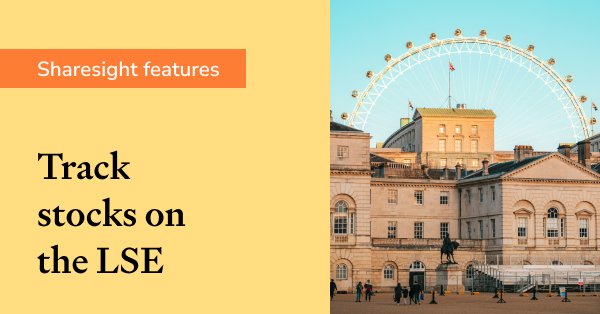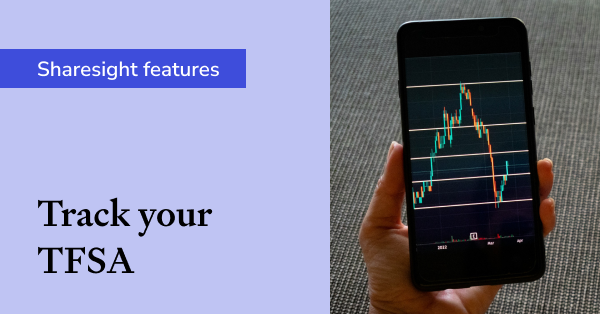5 easy steps to get organised at EOFY
It’s easier than ever to use technology to get your investments organised for the end of the Australian financial year (EOFY). Whether you want to check performance or organise tax information, you’re a lot closer than you think to being a “life admin” all-star.

How to get organised at EOFY
- 1 -- Find out how many shares you own
- 2 -- Gather your trade details from your broker
- 3 -- Enter the data into Sharesight
- 4 -- Confirm your dividends
- 5 -- Share portfolio access with your accountant
Sharesight brings together data from brokers, share registries, and paper statements to give you a complete picture of your investment portfolio. Using Sharesight means your investments are actually one of the simpler aspects of your finances to get prepped for tax time.
Don’t believe me? Let’s use my holding in Alumina (AWC) from my portfolio as an example.
If you can access historical buy and sell trading records, you’ll need:
| Investment Code (ticker) | Number of Units | Trade Date | Execution Price |
|---|---|---|---|
| AWC | 354 | 18/06/2014 | $1.44 |
Tip: if you used an online broker to trade during the financial year, this is the best option.
If you don’t have access to transaction data, use an opening balance:
| Investment Code (ticker) | Cost Base | Number of Units | Opening Balance Date |
|---|---|---|---|
| AWC | $509.76 | 354 | 18/06/2014 |
Tip: if your records are a mess, or you’re looking to make a fresh start this is the best path to take. A cost base can represent a number of trades and corporate actions so it’s less data to worry about. Your financial statements will include cost base or balance information.
We’ve talked a lot about the limitations of your online broker. Fortunately, using Sharesight means you can trade through your broker and leave the rest to us.
Step 1: Find out how many shares you own
The first step to getting organised at EOFY is to find out how many units (shares) you own in each investment by checking the share registry or CHESS.
Share registries don’t care about you, the investor. But, you do need to login to their websites or track down the statements they’ve snail mailed you to find out how many units of each investment you own. Keep in mind you’ll probably need to do this on more than one registry.
The three major Australian share registries are Computershare, Link, and Board Room. Using their websites is a brutal experience, but you only need to do it once. Just look for the company and quantity. That’s all you need. Here’s my holding in Alumina (AWC):

If relying on the paper statement, it will look similar. Also keep in mind that registries may require you to create separate accounts if you have multiple Holder Identification Numbers (HINs). While annoying and inefficient, Sharesight will aggregate the data for you because you’re in control of how you structure a tax entity.
Alternatively, the ASX operates a system known as CHESS, which is like a share registry. Any ASX-listed shares you’ve traded through a CHESS sponsored broker will also be reflected in CHESS.
CHESS will post you statements with the number of units you hold in each security. There is no online CHESS facility, incredibly. In your shoe box, look for paperwork with the ASX logo, chances are that’s a CHESS statement.
Importantly, CHESS will not know of any units you bought or sold “off-market,” such as an employee share purchase plan, a corporate action such as a demerger, or via certain IPOs.
Step 2: Gather your trade details from your broker
On your broker’s website, look for a page called “transactions” or “confirmations.” Here’s how my AWC buy trade looks in my broker, for example:

Most brokers also let you download your trading history to a spreadsheet (.csv) file. If you're able to do so, go ahead and download it.
Step 3: Enter the data into Sharesight
If you don't already use Sharesight, simply sign up for a Free account.
Once in Sharesight, follow the relevant prompts based on how you plan to enter the data:
-
If you’ve made just a few (less than 10) trades throughout the year, it’s easy to punch these into Sharesight manually.
-
If you’ve traded a bit more, use our Broker Import feature to automatically import your trading history.
-
Most brokers also let you download your trading history to a spreadsheet (.csv) file. This can be uploaded to Sharesight using our Bulk Upload feature.
Here’s how this looks when manually entering my AWC buy trade:

And here’s how this would look if using an opening balance. Sharesight will automatically work out the market value based on the data you provide:

Step 4: Confirm your dividends
Sharesight has calculated your performance, including capital gains/losses, the impact of dividend income, and currency effects if holding something overseas. Much of the Sharesight magic involves how we automate dividends.
On the AWC holding page check out how Sharesight has automatically populated the five dividends I’ve received since my first AWC buy. We even automatically factor in the franking credit information:

Here’s how the dividend history for AWC appears on the share registry website. Notice how the Net dividend matches the Franked amounts in Sharesight exactly.

If you’ve enrolled in a dividend reinvestment plan (DRP), not to worry. You can switch this on in Sharesight and we’ll reinvest the historical dividends on your behalf.
It’s important to note that the data automatically populated in Sharesight is considered “as reported.” It’s a good idea to double-check your dividend history against the share registry. They’re the ones who actually dole out the payments. Once OK, you can confirm each dividend or do so in bulk.
Brokers give you one half of the picture, share registries give you the other. You can only be a successful and organised investor if you combine the two.
Step 5: Share portfolio access with your accountant
If your data was at hand the above process should have taken you just a few minutes. Now it’s time to wow your accountant -- and drive down the cost of your accounting invoice. All the work is done!
Under the Sharing & Permissions tab, you’ll find a simple way to share your portfolio with your accountant. We recommend giving them "Read and Write" access so they can make edits if need be.

Bonus: Run your own tax reports
- The Taxable Income Report lists all dividend payments and interest payments received during the year, which you are required to include in your tax return to the ATO.
- The Capital Gains Tax Report calculates capital gains made on sold shares as per ATO rules.
- The Unrealised CGT Report makes it easy to lower your capital gain tax obligations by modelling the implications of selling shares to offset gains and losses you incurred during the year.
Save by claiming your subscription
Sharesight is a cloud-based investment portfolio tracker that by its very nature makes performance and tax information easy to report -- and you can track up to 10 shares for free. In most cases, Australian tax residents can claim next year’s subscription fee on this year’s tax return by upgrading to a paid plan before 30 June1. And as a bonus, when you pre-pay for an annual subscription, you get 1 month free.
FURTHER READING
- 5 ways to get the portfolio insights you need
- Why do I need Sharesight with my online broker?
- Record-keeping requirements for Australian investors
Important Disclaimer: We do not provide tax advice. Make sure you seek appropriate tax advice before implementing the ideas in this post.
1If you derive income from the sharemarket, your Sharesight subscription may be tax deductible. Check with your accountant for details.

Track stocks on the London Stock Exchange with Sharesight
With Sharesight, you can automatically track the price and performance of thousands of stocks and ETFs on the London Stock Exchange (LSE).

Track your TFSA with Sharesight
You can easily track your Tax-Free Savings Accounts (TFSAs) in Sharesight, in addition to your non-registered, RRSP, and RRIF accounts.

Top 50 finance and investing podcasts in 2024
The Sharesight team has put together a list of the top 50 investing, personal finance and business news podcasts worldwide.